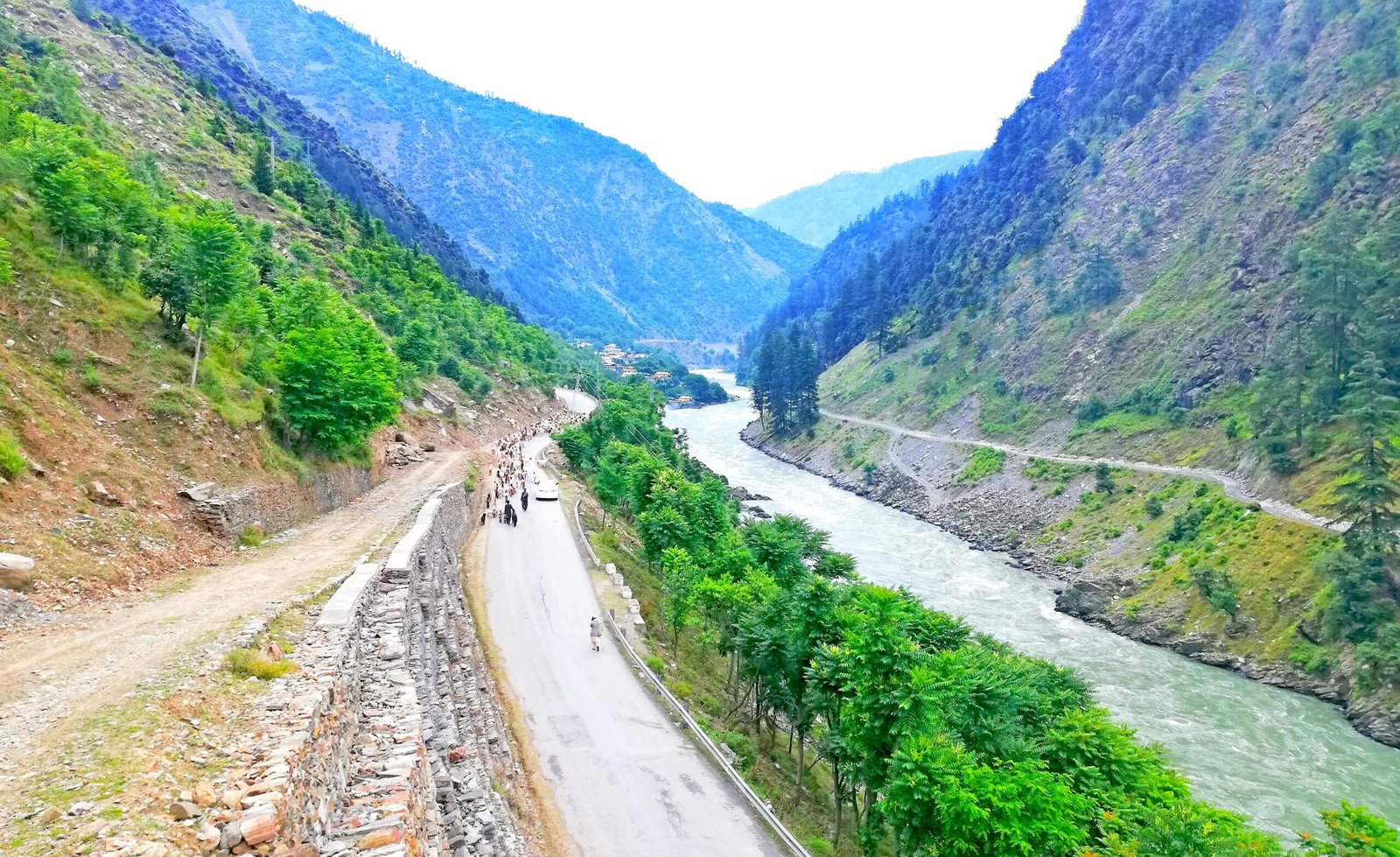
Education Gap: Empowering the Future of Azad Kashmir
Nestled between the lush mountains and flowing rivers of Azad Jammu and Kashmir (AJK), education gap in this region faces unique challenges and remarkable potential. While the literacy rate has
Nestled between the lush mountains and flowing rivers of Azad Jammu and Kashmir (AJK), education gap in this region faces unique challenges and remarkable potential. While the literacy rate has shown improvement, with men at 75% and women at 60%, there is still a gap in education access, particularly in rural areas. Geographic isolation, cultural norms, and insufficient infrastructure influence this gap. But despite these hurdles, there is a growing focus on creating opportunities for children across this scenic region, from the bustling streets of Muzaffarabad to the remote valleys of Neelum and Rawalakot.
The Urban-Rural Divide: A Tale of Two Realities
Urban Education: A Stepping Stone for Progress
Access to education is comparatively better in urban centers like Muzaffarabad, Rawalakot, and Mirpur. With modern schools, colleges, and even universities, these cities offer a range of educational opportunities from elementary to higher education. The University of Azad Jammu and Kashmir (UAJK) in Muzaffarabad stands as a key institution in promoting higher learning and providing local students with a quality education without the need to travel far.
Better infrastructure, well-trained teachers, and advanced learning resources, such as libraries, laboratories, and digital classrooms, equip these urban areas. In many cases, private schools offer an alternative to public education, providing access to quality education in both English and Urdu.
Education Gap: Challenges that Need Attention
However, the picture changes dramatically when you move towards the rural areas of Azad Kashmir. The mountainous terrain, lack of roads, and isolated villages make accessing education a significant challenge for children in these areas. In some remote regions, children have to walk for hours to get to school, a factor that leads to high dropout rates, especially among girls.
Lack of resources often compromises the quality of education in these areas. Many schools lack basic infrastructure like proper classrooms, toilets, and teaching materials. Additionally, there is a shortage of qualified teachers, which further limits educational outcomes. In some cases, schools operate in makeshift buildings, and students learn in overcrowded and poorly equipped classrooms.
Rural areas particularly pronounce gender disparities. While boys typically have better access to education, cultural and traditional norms often restrict girls’ mobility and opportunities for education. In these regions, people do not always recognize the importance of educating girls, and fewer girls attend school or complete their education compared to boys.
Government and NGO Initiatives: Making a Difference
Efforts are underway to improve education in Azad Kashmir, spearheaded by both the government and non-governmental organizations (NGOs).
Government Steps for Educational Reform to reduce education gap
The public authority has been dynamic in further developing the schooling system through drives like the Training Area Changes Program (ESRP). The essential objective is to upgrade proficiency rates, further develop training quality, and guarantee that youngsters, particularly in far-off regions, can get to schools. Key advances include constructing new schools for underserved regions, updating existing foundations, and giving educators preparing projects to improve the general instructing standard.
Grants, charge sponsorships, and the presentation of free schooling for young ladies in numerous areas likewise had an impact on empowering enlistment. The public authorities’ attention is on building new schools in country regions and modernizing the educational plan guarantees that training in Azad Kashmir can more readily address the issues of the 21st 100 years.

NGOs: Filling the Education Gap
NGOs have been pivotal in filling the gaps left by government initiatives, particularly in areas that are difficult to reach. Organizations like the Aga Khan Foundation and The Citizens Foundation have established schools in some of the most remote parts of Azad Kashmir. These NGOs not only build schools but also offer teacher training programs and promote educational awareness, particularly for girls. Their approach is often community-driven, involving local leaders and families in ensuring that education becomes a priority.
NGOs also strive to overcome cultural obstacles, especially the difficulty of educating girls. Because of these organizations’ tenacious efforts, many local communities are now seeing the value of educating their daughters. These NGOs are assisting with school infrastructure improvements, educational resource provision, and vocational training programs to help students get ready for the workforce through local partnerships.
Private Sector’s Role: A Growing Influence
The state-funded school system remains dominant in Azad Kashmir, but private-sector education is rising fast, reshaping the region’s learning landscape. Tuition-based schools are for the most part tracked down in metropolitan regions, where they give better offices, English-medium training, and a more present-day educational plan. These schools frequently have more modest class sizes, further developed showing materials, and a more understudy-focused way to deal with learning.
The public authority has additionally begun to participate in open confidential organizations to work on the general nature of schooling. By teaming up with non-public schools, the public authority plans to make quality training open to additional understudies, particularly the people who might not possess the ability to go to costly confidential foundations.

Key Recommendations To Reduce Education Gap in Azad Kashmir
While there is much to celebrate, there are still several areas where improvement is needed. Here are a few key recommendations to address these gaps and ensure a brighter future for Azad Kashmir’s children:
1. Improve Infrastructure in Rural Areas
A significant investment is required in the rustic schooling framework. Constructing new schools, further developing transportation choices, and overhauling old offices ought to be important. Admittance to training ought not to be restricted by geology, and endeavors ought to be made to carry instruction nearer to distant networks.
2. Strengthen Teacher Training Programs to reduce Education Gap
Teachers are at the heart of any education system. The government should focus on comprehensive teacher training programs, ensuring that teachers are not only well-equipped with knowledge but also motivated to work in rural areas. Incentives for teachers to work in underserved areas, such as higher salaries, housing allowances, or career advancement opportunities, could help address teacher shortages.
3. Address Gender Inequality
There is an urgent need to address the gender gap in schooling. We can guarantee that every kid, regardless of gender, has the opportunity to learn by raising awareness of the value of educating females and dismantling cultural barriers. Girls will remain in school with the assistance of the community, safe transportation choices, and special scholarships.
4. Expand Vocational and Technical Education Gap
While academic education is vital, vocational and technical training should be expanded to provide young people with practical skills that align with the local job market. Fields such as agriculture, construction, and information technology offer promising career opportunities that can contribute to the economic development of Azad Kashmir.
5. Promote Digital Education
Digital education platforms have the potential to bridge the gap in educational resources. Online learning, virtual classrooms, and the use of mobile apps for education can reach children in even the most remote areas. The COVID-19 pandemic highlighted the importance of digital learning, and leveraging this tool can provide students in Azad Kashmir with an uninterrupted learning experience.
A Bright Future Awaits Azad Kashmir’s Education System
The schooling system in Azad Kashmir has progressed significantly, yet obviously, there is still a lot to be finished. The public authority, NGOs, and the confidential area should cooperate to address the variations in schooling among metropolitan and provincial regions. With the right ventures, strategies, and local area support, Azad Kashmir can turn into a model for comprehensive schooling, giving all kids the devices they need to prevail throughout everyday life.
The eventual fate of Azad Kashmir relies upon the schooling of its childhood. By engaging them with information, abilities, and potential open doors, we can connect the training hole and make a prosperous, flourishing society for a long time into the future.








